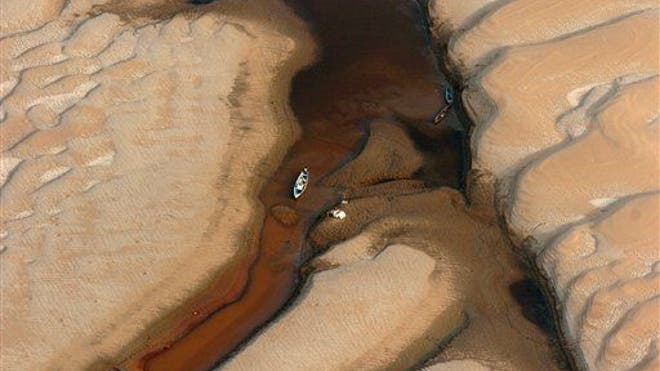 In this Oct. 4, 2005 file photo, a boat tries to make its way through a section of the Amazon River suffering from lower water levels near Uricurituba in northern Brazil.AP Photo/A Critica, Euzivaldo Queiroz,File
In this Oct. 4, 2005 file photo, a boat tries to make its way through a section of the Amazon River suffering from lower water levels near Uricurituba in northern Brazil.AP Photo/A Critica, Euzivaldo Queiroz,FileIt's an argument that's persisted for nearly four centuries: Where does the Amazon River begin?
The question is complicated by the number of tributaries that feed into it, with at least five Peruvian rivers grabbing the title at some point since the mid-1600s.
Now, a group of researchers write in Area that the Apurimac River has wrongly been attributed as its source since 1971, and they have a replacement: southwestern Peru's Mantaro River.
If the designation sticks, another change would follow: The Amazon would grow, with another 47 to 57 miles being tacked on to its roughly 4,000-mile length.
But it's a somewhat muddied conclusion. First, the definition of "source" isn't entirely established, but the currently accepted explainer is "the most distant point up the longest tributary in the river's drainage basin," explains National Geographic.
Using topographic maps, satellite imagery, digital hydrographic datasets, and GPS tracking data to chart the Mantaro, the team determined it was roughly 10 percent longer than the Apurimac, handing it the title.
Except the Mantaro doesn't flow year-round; a dam constructed in 1974 causes it to run dry for nearly five months. Some geographers say that means it's not a contender; the study's authors say man-made or temporary changes shouldn't factor in.
A Smithsonian geographer concedes that the Mantaro could be considered "a new source of the Amazon"—but not "the source." (It's not the only Amazon discovery made in recent months.)
More From Newser